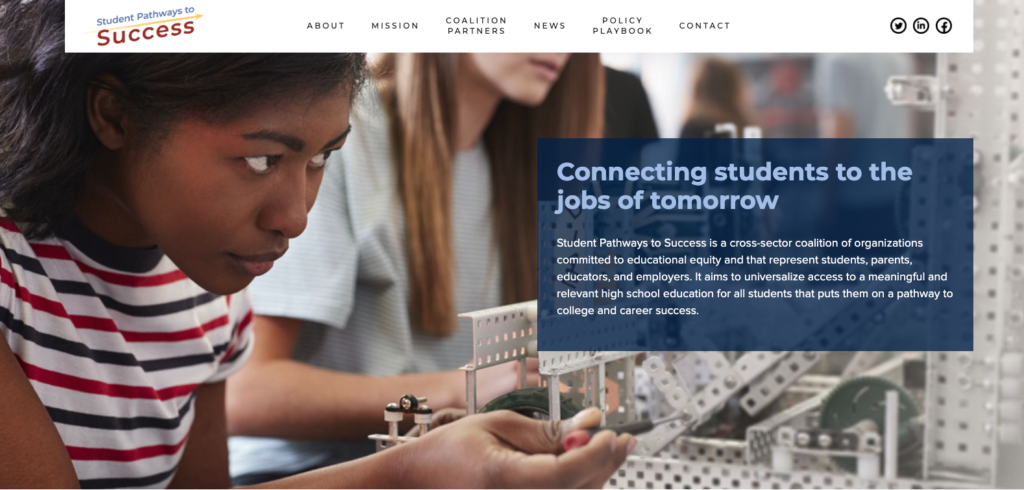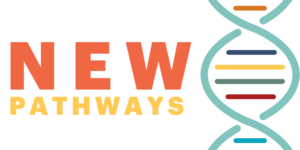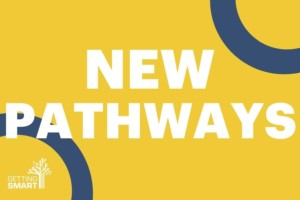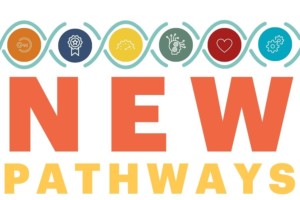North Star Goal: Every Learner on a Personalized Pathway
Key Points
-
States across the nation are leading examples of what is possible within creating and legislating for new career pathways.

It’s impossible to make systems change without changing the system.
Across the nation, policies and commitments are being made to innovative and equitable pathways toward high-wage employment, entrepreneurship and shared prosperity.
One example of progress is in Massachusetts, with assistance from the Massachussetes Bussiness Alliance for Education (MBAE). This organization recently co-hosted an event and invited us to speak given our focus on New Pathways. The event was titled Striking Student Breakthroughs: Improving Educational and Economic Opportunity for All, and was a public launch event for the Student Pathways to Success Coalition.
The coalition “is dedicated to empowering students, particularly those from historically under-resourced communities, to thrive and prosper in the Massachusetts economy thereby closing wage and wealth gaps and promoting a more equitable Commonwealth.”
The event highlighted pathway progress in three other states as outlined by Paul Herdman, CEO of the Rodel Foundation of Delaware; Katie Zaback, Vice President of Government Affairs at Colorado Succeeds; and Dr. David Deggs, Director of Programs at Educate Texas.
What does change look like in Massachusetts?
The vision of this coalition is to have “every high school student in Massachusetts on a personalized learner pathway and have opportunities to earn college credit, participate in work-based learning, attain industry-recognized credentials, and receive dedicated career counseling.
Every public high school will offer multiple structured pathway options that are aligned with valuable postsecondary degrees, high-growth industries, or in-demand occupations.
Every high school student will have the guidance and flexibility they need to create a personalized pathway that aligns with their higher education and career goals, allowing for the combining of coursework or elements from different pathway programs and the ability to transfer into other pathways.”
All of this by 2030.
It’s impossible to make systems change without changing the system.
Getting Smart Staff
In order to achieve this, the coalition must “show policymakers, business leaders, and equity groups how and why Massachusettes must strengthen and scale pathways to college and career success that benefit every student in every high school.”
The coalition has outlined the following steps to support state leaders in achieving this goal:
- Adopt the North Star Pathways Goal and develop, through engagement with stakeholders, the strategy for achieving it
- Strengthen and scale pathway programs that work for students – including Early College, Innovation Pathways, and other career and technical education programs while also bringing exciting new models like P-TECH to Massachusetts.
- Invest in guidance and career counseling so that students have access to navigation supports that will help them chart their personalized learner pathways.
- Ensure that high schools have the characteristics necessary to promote post-graduate student success.
- Grow the Workforce Skills Cabinet into a more robust governance structure to make sure that learner pathways programs continue to expand in ways that are aligned with future workforce needs.
- Collect better data on how pathways programs are helping students–and get that data in the hands of families, educators, and advocates.
Federal Support for Pathways
Assistant Secretary Amy Loyd said pathways are one of the top three priorities for the US Department of Education. The Departments of Commerce and Labor are adding support with the recent announcement of Raise the Bar: Unlocking Career Success, a commitment to “high-quality training programs to help young Americans pursue jobs in today’s in-demand fields, and be prepared for careers of the future.”
This announcement includes: investing $5.6 million in Perkins funding for schools to expand work-based learning opportunities, the launch of the “Career Z Challenge: Expanding Work-Based Learning Opportunities” competition in Spring 2023, providing new guidance to schools on using American Rescue Plan funds to expand career pathways for students to pursue in-demand jobs and support Registered Apprenticeships and more.
These examples create a useful roadmap in identifying how pathways change can happen at the federal, state and local levels.
This post is part of our New Pathways campaign sponsored by American Student Assistance® (ASA), Stand Together and the Walton Family Foundation.




0 Comments
Leave a Comment
Your email address will not be published. All fields are required.